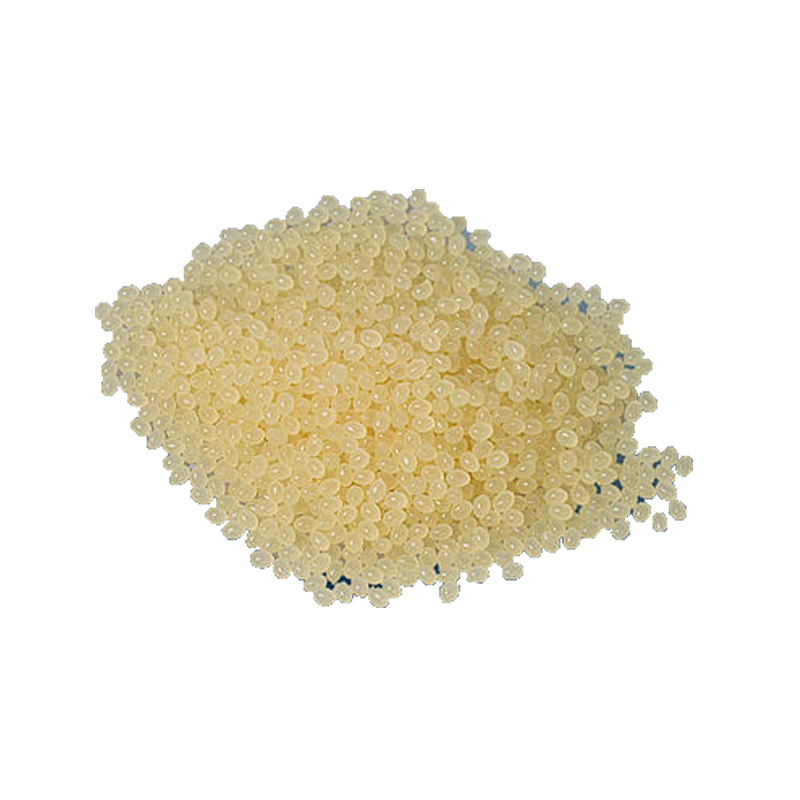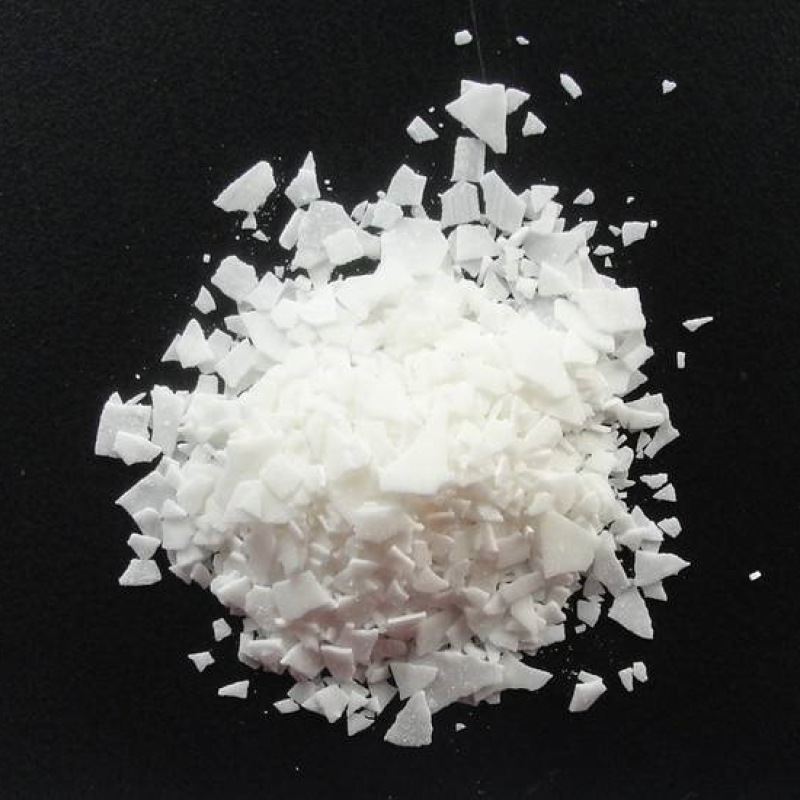Products Description of 1-Phenoxy-2-propanolCAS#770-35-4Transparent viscous liquid.
Contact Now
Products Description of α-galactosidaseCAS#9025-35-8α-Galactosidase is a glycoside hydrolase that catalyzes the hydrolysis of α-galactosidic bonds. It can hydrolyze D-galactose residues bound by α-1,6 bonds at the non-reducing end, as well as oligosaccharides such as honey, raffinose, stachyose and verbascose.
Contact Now
Products Description of KERATINCAS#68238-35-7Fibrous protein produced by animal epithelial cells. It is the main component of hair, feathers, horns, nails, hooves, silk, etc., and has a protective effect on animals. It can be divided into two categories: one is α-keratin, such as the protein of hair, horns, nails, hooves, etc., which is rich in cystine in the molecule; the other is β-keratin, such as silk fibroin, which does not contain cystine and cysteine in the molecule, but has a high content of glycine, alanine and serine.
Contact Now
Products Description of 4-Chloropyridinium chloride CAS#7379-35-34-Chloropyridine hydrochloride can be used as a pharmaceutical intermediate in laboratory organic synthesis and chemical pharmaceutical research and development.
Contact Now
Products Description of 4-Chloroquinoline CAS#611-35-84-Chloroquinoline is a key intermediate commonly used in the synthesis of quinoline derivatives with important biological activities.
Contact Now
Products Description of Sodium gualenate CAS#6223-35-4Sodium azulene sulfonate is unstable and will decompose under light, air oxidation and high temperature, and it is easy to remove the sulfonic acid group.
Contact Now
Products Description of 4-Methylbenzenesulfonhydrazide CAS#1576-35-8p-Toluenesulfonyl hydrazide, also known as 4-methylbenzenesulfonylhydrazide, is a white crystalline powder, easily soluble in alkali, soluble in methanol, ethanol and butanone, slightly soluble in water and aldehydes, and insoluble in benzene and toluene. It is used as a foaming agent for natural rubber, synthetic rubber and various plastics to produce fine closed-cell structures in plastics and rubber products. The products have small shrinkage and high tear resistance.
Contact Now
Products Description of 4-Methylbenzenesulfonhydrazide CAS#1576-35-8p-Toluenesulfonylhydrazine, also known as 4-methylbenzenesulfonylhydrazine, is a white crystalline powder, easily soluble in alkali, soluble in methanol, ethanol and butanone, slightly soluble in water and aldehydes, and insoluble in benzene and toluene. It is used as a foaming agent for natural rubber, synthetic rubber and a variety of plastics, making plastics and rubber products have fine closed-cell structures, small shrinkage and high tear strength.
Contact Now
POLY(METHYLSTYRENE-CO-INDENE) CAS#69430-35-9It has good thermal stability and chemical stability, and is not prone to chemical reactions under normal conditions. However, under extreme conditions such as high temperature, strong acid, and strong alkali, its chemical structure may be affected to a certain extent.
Contact Now
Products Description of SODIUM DIHYDROGEN CITRATE CAS#18996-35-5Colorless crystals or white crystalline powder, odorless, salty and slightly sour. Soluble in water, insoluble in ethanol. Ph value of 10% aqueous solution is 3.4-3.8.
Contact Now
Products Description of Xylazine Hydrochloride CAS#23076-35-9Xylazine hydrochloride, also known as xylazine hydrochloride, is a sedative veterinary drug.
Contact Now
Products Description of Orthoboric acidCAS#10043-35-3Boric acid is a crystalline compound formed by boron trioxide dissolving in water. It is an inorganic acid, mainly tetraboric acid H2B4O7 (also known as pyroboric acid), metaboric acid (HBO2)n and orthoboric acid H3BO3 (also known as orthoboric acid). Among them, orthoboric acid has the highest water content and is the most stable. Orthoboric acid, also known as boric acid for short, has the appearance of white powdery crystals or flaky crystals with three oblique axes and is shiny. It has a slight bitter taste.
Contact Now
Antioxidant 1035 Chemical PropertiesMelting point 78 °CBoiling point 659.4±55.0 °C(Predicted)density 1.072±0.06 g/cm3(Predicted)storage temp. Sealed in dry,Room Temperaturesolubility DMSO (Slightly), Methanol (Slightly)form Solidpka12.02±0.40(Predicted)color White to Off-WhiteCAS DataBase Reference41484-35-9(CAS DataBase Reference)EPA Substance Registry SystemThiodi-2,1-ethanediyl bis[3,5-di-tert-butyl-4-hydroxyhydrocinnamate] (41484-35-9)Safety InformationRTECS DA8342500HS Code 2930.90.2900Factory and Equipment ShowFast delivery timeInventory 2-3 w
Contact Now
Products Description of 2,7-naphalenedisulfonic acid CAS#1655-35-2 Sodium 2,7-naphthalene disulfonate, white powder, is mainly used in organic synthesis and dye industry.2,7-Naphthalenedisulfonic acid disodium salt Chemical Propertiesform powder to crystalcolor White to Light yellow to Light orangeCAS DataBase Reference1655-35-2(CAS DataBase Reference)EPA Substance Registry System2,7-Naphthalenedisulfonic acid, disodium salt (1655-35-2)Safety InformationHazard Codes XiRisk Statements 36/37/38Safety Statements 37/39-26Hazard Note IrritantHS Code 2904
Contact Now
Products Description of Myrcene CAS#123-35-3 Myrcene is a colorless to light yellow oily liquid. It has a sweet orange flavor and balsamic odor; boiling point 167°C; flash point 37.2°C; soluble in ethanol, ether, chloroform, glacial acetic acid and most non-volatile oils, insoluble in water.
Contact Now
Products Description of Trimanganese tetraoxide CAS#1317-35-7Manganese tetraoxide is a black tetragonal crystal, also known as manganese pyroxene, black manganese ore, and active manganese oxide. It is calcined into crystals and belongs to the spinel class. It is an important industrial raw material.Manganese tetraoxide is mainly used in the electronics industry and is a raw material for producing soft ferrites. Soft ferrites are made by sintering and molding manganese, zinc, and iron oxides in a certain ratio.
Contact Now
Products Description of 2-Hydroxypropyl-β-cyclodextrinCAS#128446-35-5 Hydroxypropyl-BETA-cyclodextrin is one of the most intensively studied and widely used cyclodextrin derivatives.
Contact Now
Products Description of 4-Acryloylmorpholine CAS#5117-12-4N-Acryloylmorpholine is a chemical substance with the molecular formula C7H11NO2.4-Acryloylmorpholine Chemical PropertiesMelting point −35 °C(lit.)Boiling point 158°C 50mmdensity 1.122 g/mL at 25 °C(lit.)vapor pressure 1.03-1.64Pa at 25-29.9℃refractive index n20/D 1.512(lit.)Fp >230 °Fstorage temp. 2-8°Csolubility Soluble in waterpka-1.08±0.20(Predicted)form Liquidcolor Colorless to yellowWater Solubility 1000g/L at 20℃Sensitive Light Sensi
Contact Now
Products Description of 5-Chloro-2-pentanone CAS#5891-21-4Liquid. Boiling point 76℃ (4.53kPa), 71-72℃ (2.67kPa), relative density 1.0523 (20/4℃), refractive index 1.4375, flash point 35℃.
Contact Now
Products Description of (2S)-1-(Chloroacetyl)-2-pyrrolidinecarbonitrile CAS#207557-35-5 (2S)-N-Chloroacetyl-2-cyanopyrrole is a key intermediate of the dipeptidyl peptidase IV inhibitor vildagliptin (V305000)(2S)-1-(Chloroacetyl)-2-pyrrolidinecarbonitrile Chemical PropertiesMelting point 52-53 °CBoiling point 363.1±37.0 °C(Predicted)density 1.27±0.1 g/cm3(Predicted)storage temp. under inert gas (nitrogen or Argon) at 2-8°Csolubility Chloroform (Slightly), DMSO (Slightly), Methanol (Slightly)form Solidpka-4.65±0.40(Predicted)color Pale Yellow to Ligh
Contact Now
Products Description of Methyl 3-amino-4-methylthiophene-2-carboxylate CAS#85006-31-1Methyl 3-amino-4-methylthiophene-2-carboxylate is an organic raw material.Methyl 3-amino-4-methylthiophene-2-carboxylate CAS#85006-31-1 Chemical PropertiesMelting point 85-88 °C (lit.)Boiling point 318.6±37.0 °C(Predicted)density 1.264±0.06 g/cm3(Predicted)Fp >100°Cstorage temp. Keep in dark place,Sealed in dry,Room Temperaturesolubility Chloroform (Slightly), Methanol (Slightly)pka1.71±0.10(Predicted)form Solidcolor Pale YellowWater Solubility 1g/L at 35℃BR
Contact Now
Products Description of Poly(ethylene glycol) distearate CAS#9005-08-7This product is a white solid, soluble in isopropanol, glycerin, gasoline solvents, dispersed in water, melting point 35 ~ 37 ℃.Poly(ethylene glycol) distearate Chemical PropertiesMelting point 35-37 °CFp >230 °FOdorat 100.00?%.
Contact Now
Products Description of POLYGLYCERYL-4 LAURATE CAS#75798-42-4Colorless liquidFactory and Equipment ShowFast delivery timeInventory 2-3 working days New production 7-10 working days
Contact Now
Products Description of 4-Acetylpyridine CAS#1122-54-94-Acetylpyridine is an organic compound with the molecular formula C7H7NO.4-Acetylpyridine Chemical PropertiesMelting point 13-16 °C(lit.)Boiling point 212 °C(lit.)density 1.095 g/mL at 25 °C(lit.)refractive index n20/D 1.529(lit.)Fp >230 °Fstorage temp. Inert atmosphere,Room Temperaturesolubility Chloroform, Ethyl Acetateform LiquidpkapK1: 3.505(+1) (25°C)Specific Gravity1.110 (20/4℃)color brown-yellowishWater Solubility insolubleBRN 107629InC
Contact Now

































